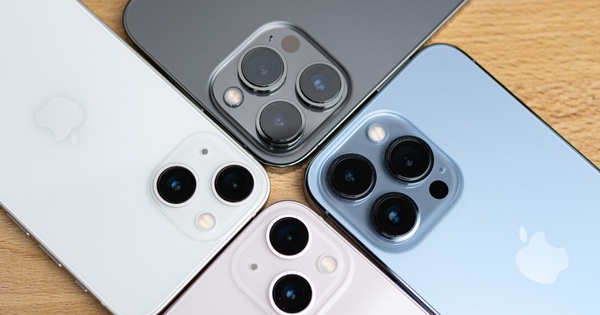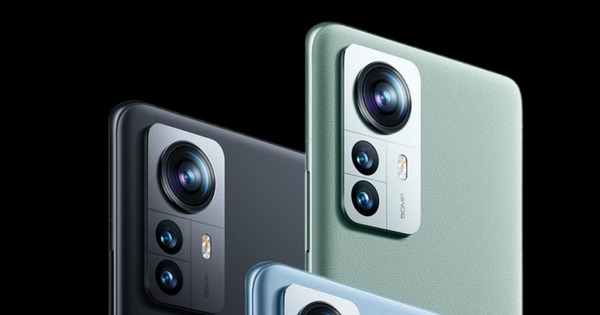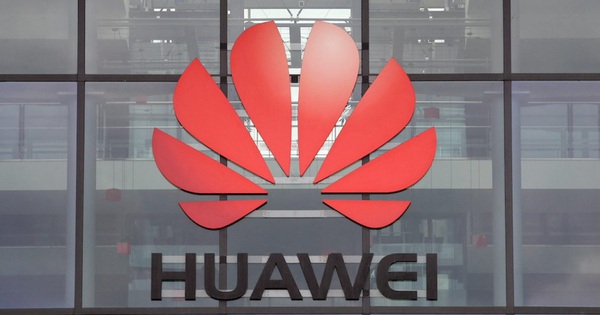The technology that has been marginalized is suddenly taken advantage of when electric cars explode, will the whole industry change?

Twenty-one years ago, Bart Riley and his co-founders bet their fledgling company A123 Systems on a nickel and cobalt-free battery. They believe the technology will bring a number of benefits to manufacturers in the nascent electric vehicle sector.
Riley recalls the time when their Massachusetts-based startup offered this particular battery to Tesla between 2008 and 2011. He said the automaker didn’t want to use the battery. .
A123 Systems has been trying to sell batteries for General Motors (GM) Chevrolet Bolt line. But GM used LG batteries, which rely on nickel and cobalt.
In the end, A123 Systems was not profitable in this deal. The company filed for bankruptcy in 2012. The bankruptcy outraged then-Republican presidential candidate Mitt Romney. It is one of several failed renewable energy investments that conservatives have criticized Obama for.
While Riley’s company is losing money, the batteries that Riley bet on are increasingly winning. That’s lithium iron phosphate, or LFP.

Demand for nickel and cobalt has increased dramatically in recent years. Automakers are also adopting strategies to combat the volatile market. Tesla has changed his mind. In April, the automaker said nearly half of all electric vehicles sold in the first quarter of 2022 used nickel and cobalt-free batteries.
Batteries like the one Riley envisioned are gaining in popularity as automakers are concerned about avoiding the use of nickel and cobalt. These are metals that are increasingly rare and difficult to mine.
Riley still watches for other companies to profit from the potential he sees. “It’s really hard to keep an eye on other people taking advantage of what we’ve discovered,” says Riley.

Tesla and other automakers like China’s BYD have switched to LFP batteries. This type of battery was developed in the US in the 90s, but then was mostly pushed aside by the US electric car world. Experts say the technology could give Tesla an edge over rivals that don’t use them.
Metals for batteries are becoming as vital to the auto industry as gasoline has been for a long time. A battery is simply a device that stores chemical energy for conversion into electrical energy. The chemistry is used in many different types of batteries, and this has a huge impact on the cost, safety, capacity, and lifespan of a battery.
Most electric vehicles in the US use lithium-ion batteries, which require cobalt and nickel. While lithium is a relatively abundant metal, cobalt and nickel are both scarce, expensive and controversial.
Nickel batteries require an environmentally damaging mining process. In addition, the nickel market has been volatile lately. Nickel prices have skyrocketed from $29,000/ton to around $100,000/ton in March. Cobalt mining in Africa is sometimes associated with child labor and safety issues.
Despite these factors, demand for battery metals such as nickel and cobalt is forecast to grow by 60-70% over the next two decades. Some automakers are making supply deals directly from miners because a shortage will destroy their business.
Usually lithium-ion batteries have three layers. The cathode contains lithium mixed with nickel and other metals such as aluminum, cobalt, and manganese. The anode is made of graphite and sometimes silicon. The two-pole separator is a layer made of porous polymer. There is also a liquid electrolyte, usually made of lithium salts dissolved in a solvent.
When the battery is charged, lithium ions are transferred from the cathode to the anode. When the battery is discharged, the ions move back to the cathode, releasing energy.
Meanwhile, the LFP battery that Tesla invested in uses iron phosphate, which is abundant and cheap, in the cathode without using nickel or cobalt. LFP batteries appeared in 1997 from the laboratory of professor John Goodenough of the University of Texas, who later won the Nobel Prize in chemistry for his work on lithium-ion batteries.
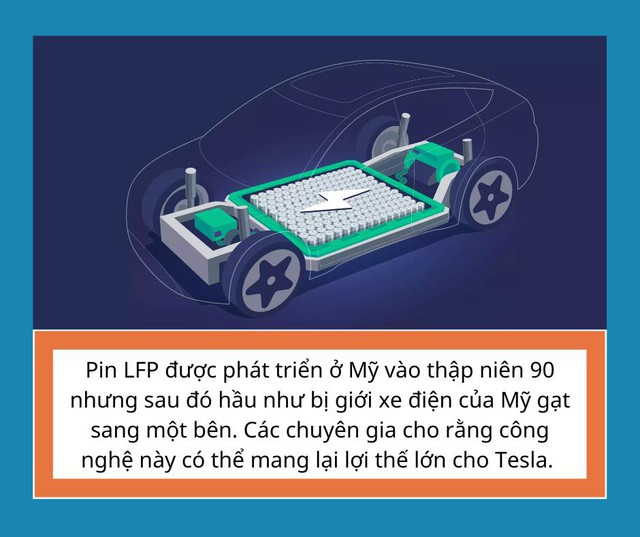
Initially, LFP batteries generated excitement and attracted investment from startups like Riley’s A123 Systems. But then the interest cooled down. When comparing the two batteries directly, Riley says, the issue of LFP’s lower energy density is always noticeable. Therefore, A123 did not succeed in their deals.
According to auto experts in the US, car owners value the range of a vehicle. Cars with LFP batteries were manufactured in the 90s and lag far behind lithium-ion batteries in terms of the amount of energy they can hold. Electric vehicle drivers with lithium-ion batteries can travel longer distances on a single charge.
As a result, the technology is shunned by the majority of automakers. GM used LFP batteries in its Chevrolet Spark electric vehicle, which went on sale in the US in 2013 and has since discontinued production. Today’s Chevrolet Bolt, which is more modern than the Chevrolet Spark, uses nickel and cobalt batteries.

However, Chinese electric vehicle manufacturers are loyal to LFPs, in part because they are sufficient for short-distance vehicles. Many battery experts have emphasized that the Chinese company BYD packs more LFP batteries by removing the packaging.
BYD sold 593,745 electric and hybrid vehicles in 2021. It is valued at nearly $100 billion, making it China’s second most valuable automaker.
According to battery industry research firm Benchmark Mineral Intelligence, China currently dominates the LFP market. Today, 44% of electric vehicles sold in China use LFP batteries, compared with 6% in Europe and 3% in the US and Canada.
According to battery experts, advances in LFP battery technology have broadened their range of operation. “We underestimated LFP’s ability to improve. It has come a long way,” Rodney Hooper, an expert at RK Equity who advises customers on batteries and lithium, told CNN Business.
Tesla now uses LFP batteries in most of its standard vehicles. The standard range Model 3 equipped with an LFP battery has a range of 430km, not much worse than the ID 4’s 450km range from VW, which uses lithium-ion batteries containing nickel and cobalt.
Besides the benefits of avoiding the need to mine cobalt and nickel for production, LFP batteries have several advantages. This type of battery is more stable and has less risk of explosion than batteries with nickel and cobalt.
LFP batteries in general can also be charged more times, which prolongs their lifespan. They can charge as often as 100%. This is inherently not recommended for cars with nickel and cobalt batteries as repeated full charges can shorten the life of the battery.
According to Jarod Kelly, who studies sustainability at Argonne National Laboratory, a battery research center, LFP batteries have 20% less greenhouse gas emissions per unit of energy than batteries. typical nickel and cobalt.
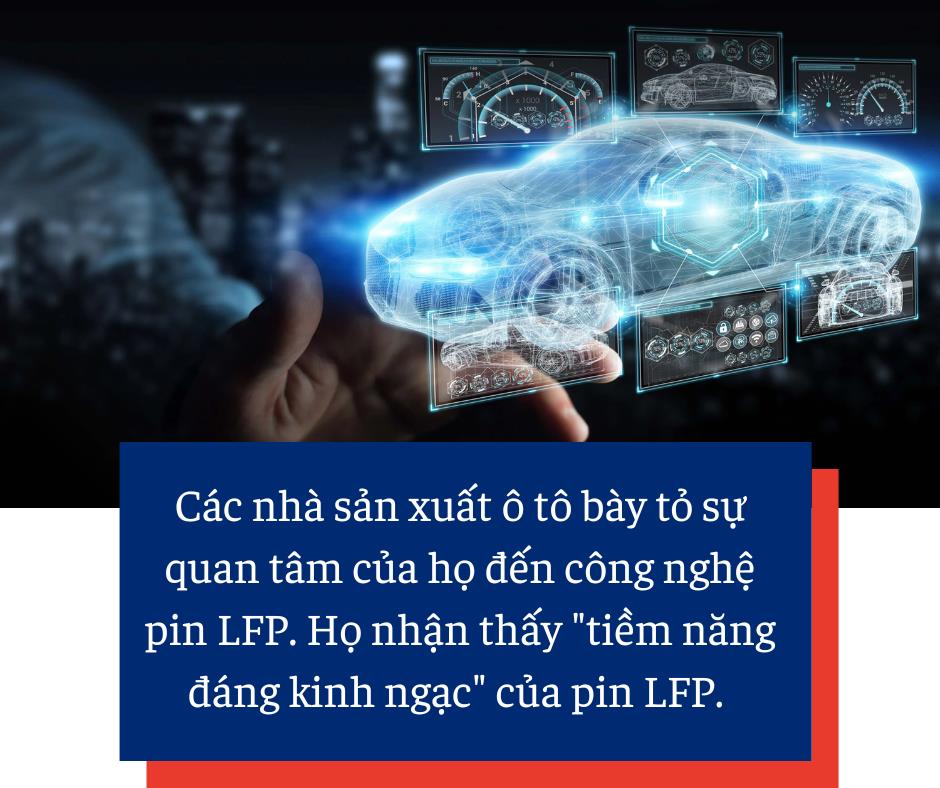
But again and again, LFP batteries also have limitations. This type of battery does not work well in cold climates. LFP recycling is not economically efficient compared to battery recycling using nickel and cobalt.
Electric vehicle advocates often promise a “revolving economy,” in which old electric vehicle batteries are recycled and turned into new batteries, helping to make the world more sustainable.
But according to battery experts, if electric vehicles switch to LFP, recycling may be less likely. Recyclers often focus on nickel and cobalt, because their value and scarcity appeal to them more than iron.
“Recycling is important, but it also has to be logical,” Ajay Kochhar, CEO of battery recycling company Li-Cycle, told CNN Business. If new iron mining is still cheaper, there will be little incentive to mine iron from used batteries. The government or the consumer may need to pay to recycle the LFP.
The adoption of LFP batteries could also make US businesses more dependent on Chinese suppliers, who dominate LFP production. Drew Baglino, a Tesla executive, said the automaker’s goal is to localize key car parts on the continent where the cars are manufactured.
However, automakers other than Tesla have expressed their interest in LFP battery technology. Rivian told CNN Business that it sees the “incredible potential” of LFP batteries. Last year, the electric car company first revealed that it plans to use LFP batteries in standard vehicles. VW is also expected to use LFP batteries in its smaller cars. Ford says it is “looking into” LFP batteries.
Riley continues to strive to push battery technology forward. He co-founded another startup called Conamix. The company is trying to develop the cathode of low-cost batteries made of sulfur. Riley’s focus on batteries helps him stay on top of the success others are having with LFP batteries.
Riley said it was a bittersweet feeling.
According to CNN
at Blogtuan.info – Source: genk.vn – Read the original article here

